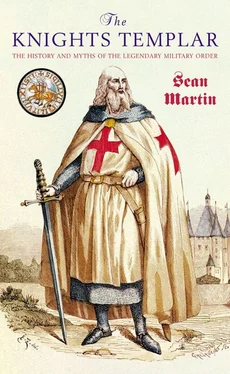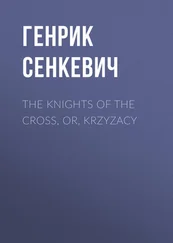Sean Martin - The Knights Templar
Здесь есть возможность читать онлайн «Sean Martin - The Knights Templar» весь текст электронной книги совершенно бесплатно (целиком полную версию без сокращений). В некоторых случаях можно слушать аудио, скачать через торрент в формате fb2 и присутствует краткое содержание. Год выпуска: 2004, ISBN: 2004, Жанр: История, на английском языке. Описание произведения, (предисловие) а так же отзывы посетителей доступны на портале библиотеки ЛибКат.
- Название:The Knights Templar
- Автор:
- Жанр:
- Год:2004
- ISBN:1-904048-28-5
- Рейтинг книги:3 / 5. Голосов: 1
-
Избранное:Добавить в избранное
- Отзывы:
-
Ваша оценка:
- 60
- 1
- 2
- 3
- 4
- 5
The Knights Templar: краткое содержание, описание и аннотация
Предлагаем к чтению аннотацию, описание, краткое содержание или предисловие (зависит от того, что написал сам автор книги «The Knights Templar»). Если вы не нашли необходимую информацию о книге — напишите в комментариях, мы постараемся отыскать её.
The Knights Templar — читать онлайн бесплатно полную книгу (весь текст) целиком
Ниже представлен текст книги, разбитый по страницам. Система сохранения места последней прочитанной страницы, позволяет с удобством читать онлайн бесплатно книгу «The Knights Templar», без необходимости каждый раз заново искать на чём Вы остановились. Поставьте закладку, и сможете в любой момент перейти на страницу, на которой закончили чтение.
Интервал:
Закладка:
Hugh, Count of Champagne, is an even more interesting figure than Godfroi. His departure for the East in 1104 seems to have been at the behest of a group of anonymous nobles, and it is possible that Hugh visited Outremer on some kind of fact-finding mission. By the time of his second visit in 1114, the Militia of Christ – quite possibly the Templars – had been formed. Although Hugh did not join immediately, he returned to France and donated land to St Bernard, who used it to found the new monastic house of Clairvaux. St Bernard later became the Templars’ chief apologist in the West, and the Cistercians and the Templars expanded at an exponential rate, with Hugh supporting both Orders. Was Hugh working in accord with some larger plan? At the very least he seems to have been a man who was acutely aware of the zeitgeist of his time. And when he did officially join the Templars in 1125, he had to swear an oath of fealty – as would any new recruit to the Order – to his own vassal, Hugues de Payen. This is remarkable in itself, and could suggest that even at this early stage, there was a powerful mystique surrounding the Order, which its members seem to have actively encouraged.
The Temple and the Temple Mount
One tradition holds that while officially supposed to be protecting pilgrims, the Templars – or a group of them, at least – were involved in archaeological excavations that took place beneath the Temple platform, in what are known as Solomon’s Stables. There had long been rumours that the treasure of the Second Temple, which was destroyed in the conflagration of 70 AD, was hidden beneath the Temple Mount, and it is possible that Hugues de Payen, the Count of Champagne and others knew of this and undertook to find it. Alternatively, the Order could have stumbled across something in the stables while carrying out alterations, as they were known to have done a great deal of building work around the al-Aqsa mosque, starting from the 1120s.
If the Order did indeed find something beneath the Temple Mount, what could it have been? Speculation has been rife (indeed, where the Templars are concerned, speculation is always rife) that they found one or more priceless relics, such as the embalmed head of John the Baptist, documents pertaining to the true origins of Christianity, and the Ark of the Covenant. Then again, maybe the treasure of the Second Temple was unearthed, which was known to have been comprised of gold and other precious metals and stones. That a major find of this sort could have occurred is not beyond the realms of possibility; after all, the scrolls discovered at Nag Hammadi and Qumran in the mid 1940s had lain untouched and well preserved for almost 2,000 years.
The Temple and the Grail
If there is one priceless relic with which the Templars are most closely associated, it is the Holy Grail. 42 42 They are also associated in some quarters with the Turin Shroud. See Keith Laidler, The Divine Deception (Headline, 2000), and Christopher Knight & Robert Lomas, The Second Messiah (Random House, 1997). Interestingly, the first family to exhibit the supposed shroud was the de Charneys, related to the Preceptor of Normandy who died with de Molay at the stake.
In popular chivalric epics of the period, such as Wolfram von Eschenbach’s Parzival , the Templars are portrayed as its guardians. (Another grail romance, the thirteenth-century French romance Perlesvaus , may have actually been written by a Templar, such is its attention to detail in regard to military matters.) But the most interesting connection between the Templars and the Grail is that the city in which they were officially launched, Troyes, is also the city in which the first grail romance was written, that of Chrétien de Troyes, who composed his Conte del Graal around 1180.
The strong connection between the Templars and the Grail does not, of course, bring us any closer to understanding what the Grail actually is. Traditionally seen as the cup used at the Last Supper, which also caught the blood of Christ at Calvary, the Grail can also be seen as a Christianisation of the Celtic myths of the Cauldron of Plenty, which is said to have granted fertility to the land and to have been an endless source of renewal. But in the hands of Chrétien, the Celtic story is merely the foundation to which he grafts new material. That he was writing in Troyes suggests that whatever new information he was privy to, it was quite possibly brought back to the city by Templars or those associated with the Order. A slightly later version of the Grail story, Wolfram von Eschenbach’s Parzival (composed c.1220) makes this more explicit by setting some of his poem in the East (he personally visited Outremer around 1200), and by peppering his text with esoteric references that can only have come about through contact with the more mystically inclined elements in the Muslim world.
The Temple and the Arab World
It was after the failure of the Second Crusade that rumours began to circulate that the Templars had deliberately sabotaged the Crusade through their treacherous alliances with the infidel. The anonymous Würzburg annalist believed that the Templars had accepted a massive bribe from Unur, the ruler of Damascus at the time of the campaign, to engineer the retreat which led to the failure of the crusade. Although accusations like these betray the usual inability of Western chroniclers to grasp the complexities of the situation in the East, where some form of accommodation between the Franks and Islam was a practical necessity, the Templars’ reputation does seem to have been tarnished from this time on (at least in the eyes of their critics in the West).
As has been noted, the Templars often employed Muslim secretaries, and a number of the Order learnt Arabic. Similarly, they had an unpredictable, but sometimes close, relationship with the Assassins, who are often seen as the Islamic equivalent of the Templars. The Order also came into contact with the Sufis. It is not beyond the realms of possibility, therefore, that ideas from the Islamic world found their way back to Europe via the Order. Twelfth-century Moorish Spain, for instance, also acted in this way, with a vast amount of learning coming into Europe via places like the University of Toledo, which had a school entirely devoted to translating works from the Arabic. This influx of knowledge had an incalculable effect on the West; indeed, it would not be too much of an overstatement to suggest that one of the most important things in the intellectual development of the West was the discovery of the East, Arabic culture and science being far in advance of the West at this time. It is this close contact with the Arab world that may have contributed to the alleged religious heterodoxy of the Templars.
The Temple and Heresy
Religious heterodoxy nearer home may also have been tainting Templar thought. The Order has long been associated with the Cathars, the heretical dualist sect which flourished in the twelfth and thirteenth centuries, mainly in southern France and parts of northern Italy. Alarmed at the spread of the heresy, Pope Innocent proclaimed a crusade against it, which got under way in 1208 under Simon de Montfort. This was the so-called Albigensian Crusade, named after the French town of Albi. It was to last on and off until 1244, when the last Cathar stronghold at Montségur fell to the forces of Louis IX and its occupants were burnt to death on the Field of the Cremated. While the majority of Templars would have been simple, unlettered men who adhered to the Catholic Church, there were elements within the Order who would have certainly been sympathetic to Catharism. Bertrand de Blancfort, the sixth Grand Master of the Temple, was from a Cathar family, and the Order welcomed Cathars into its ranks once the Albigensian Crusade was under way. So great was the number of Cathar Templars in the Languedoc that, in many preceptories, Cathars outnumbered Catholics. The Order had always accepted excommunicates into its ranks – the reason for this being usually cited as the constant manpower shortage in the East – but the same cannot be said for the Order’s sheltering of Cathars in the West, where the manpower situation was nowhere near as dire. This apparent friendliness towards the Cathars could be a legacy of Bertrand de Blancfort, and it could have also led to the Order’s consideration of the Languedoc – where the Templar presence was particularly strong – as the most likely site for the creation of their own Ordensland .
Читать дальшеИнтервал:
Закладка:
Похожие книги на «The Knights Templar»
Представляем Вашему вниманию похожие книги на «The Knights Templar» списком для выбора. Мы отобрали схожую по названию и смыслу литературу в надежде предоставить читателям больше вариантов отыскать новые, интересные, ещё непрочитанные произведения.
Обсуждение, отзывы о книге «The Knights Templar» и просто собственные мнения читателей. Оставьте ваши комментарии, напишите, что Вы думаете о произведении, его смысле или главных героях. Укажите что конкретно понравилось, а что нет, и почему Вы так считаете.












